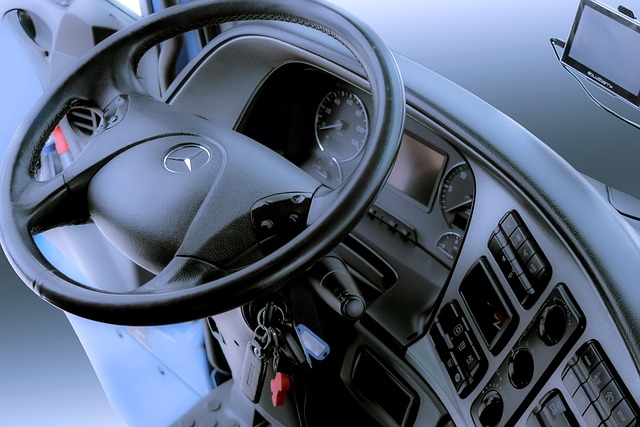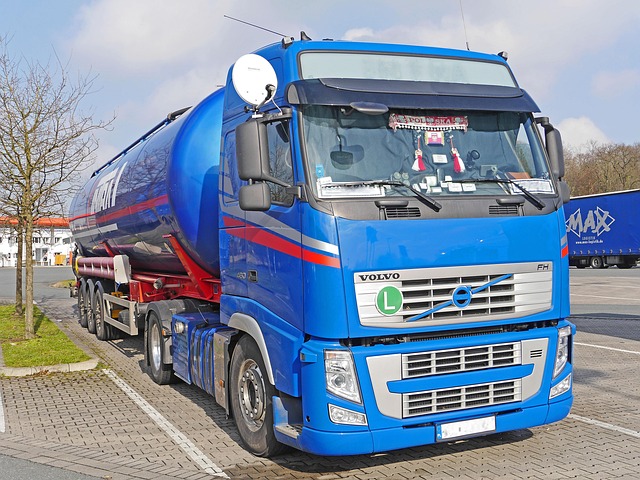Registering a car in California involves understanding a meticulous process that ensures vehicle identification number (VIN) verification for safety and legality. This guide navigates you through each step, from gathering essential documents for VIN verification to collaborating with the Department of Motor Vehicles (DMV). By following these detailed instructions, you’ll avoid common mistakes, ensuring a smooth transition during registration.
- Understanding the California Car Registration Process
- Gathering Necessary Documents for VIN Verification
- The Role of the DMV in Car Registration and Title Transfer
- Step-by-Step Guide to Registering Your Vehicle in CA
- Common Mistakes to Avoid During VIN Verification and Registration
Understanding the California Car Registration Process

Understanding the California Car Registration Process
Registering a car in California involves several steps designed to ensure vehicle safety and compliance with state regulations. The process begins with a thorough vin verification (Vehicle Identification Number) to confirm the car’s authenticity and history. This is crucial as it helps determine eligibility for registration and ensures the vehicle isn’t stolen or has outstanding recalls. Once the vin inspection is complete, you’ll need to gather essential documents, including proof of ownership, insurance, and identification.
For added convenience, many Californians opt for a mobile vin verifier service, which allows them to complete the initial vin inspection from the comfort of their home or workplace. This step-saving approach streamlines the registration process, making it more efficient and less time-consuming. Regardless of how you conduct the vin verification, having all your documents in order is key to a smooth car registration experience in California.
Gathering Necessary Documents for VIN Verification

Before you begin the registration process, it’s crucial to gather all the essential documents for VIN (Vehicle Identification Number) verification. This step is a critical part of car registration in California as it ensures the vehicle’s authenticity and history. You’ll need several key documents, including the title certificate from the previous owner(s), a valid insurance card, and proof of residency. Additionally, a mobile vin inspection or using a mobile vin verifier can be highly convenient; these services allow you to obtain a digital report of your vehicle’s history, making the verification process smoother.
Ensure that all documents are up-to-date and accurate to avoid any delays. The California Department of Motor Vehicles (DMV) will verify the information provided during registration, so having complete and correct documentation is essential. This might include registration records from previous states if you’ve moved around, as well as any maintenance or service records that highlight your vehicle’s care history.
The Role of the DMV in Car Registration and Title Transfer

The Department of Motor Vehicles (DMV) plays a pivotal role in ensuring smooth and secure car registration processes in California. It acts as the central authority for issuing vehicle titles, registering new cars, and facilitating title transfers when ownership changes hands. When it comes to verifying the authenticity and history of a vehicle, the DMV relies on the unique identifier known as the Vehicle Identification Number (VIN). This 17-character code is like a fingerprint for each car, providing crucial information about its make, model, year, and production details.
A key aspect of the DMV’s process involves vin verification, which is typically conducted through mobile vin verifier services. These services enable efficient and convenient VIN inspections, allowing customers to quickly confirm vehicle details before completing the registration or title transfer. By utilizing advanced technology for mobile vin verification, prospective owners can gain instant access to a car’s history, including any previous accidents, recalls, or ownership changes, ensuring they make informed decisions when purchasing a used vehicle.
Step-by-Step Guide to Registering Your Vehicle in CA

Registering a car in California involves several steps, but with proper preparation, the process can be smooth and efficient. Start by gathering all necessary documents, including your vehicle’s registration from the previous state, proof of insurance, and a completed California Vehicle Registration Application (DMV Form DR405). Next, perform a VIN verification to ensure your car’s unique identifier matches the records. You can do this through a mobile vin inspection service or by taking your vehicle to a designated DMV location for manual verification.
Once your VIN is confirmed, it’s time to pay the registration fees. These fees vary based on your vehicle’s type and age. After payment, submit all your documents at a nearby DMV office, or opt for a mobile vin verifier to complete the process from the comfort of your home. With these steps followed diligently, you’ll be well on your way to securing your new California vehicle registration in no time.
Common Mistakes to Avoid During VIN Verification and Registration

When registering your car in California, one crucial step is the VIN (Vehicle Identification Number) verification process. However, many individuals make common mistakes that can delay or even prevent registration. One frequent error is providing an incorrect or incomplete VIN during the initial stages of the registration process. Always double-check the VIN plate on your vehicle and ensure it’s legible before beginning.
Another mistake to avoid is relying solely on a traditional vin inspection. Opting for a mobile vin verifier can significantly streamline the process, as these services offer convenient and accurate checks right from your location. Using a reputable mobile vin verification service ensures that any issues with the VIN—such as damage or alterations—are promptly identified. This proactive approach can save you valuable time and potential headaches down the line.
Registering a car in California involves a straightforward process that requires attention to detail. By understanding the steps, gathering all necessary documents for VIN verification, and ensuring a smooth interaction with the DMV, you can efficiently complete your vehicle’s registration. Remember, accurate information and proper documentation are key to avoiding delays and common mistakes during the VIN verification stage. With this guide, you’re well-equipped to navigate California’s car registration process like a pro.
